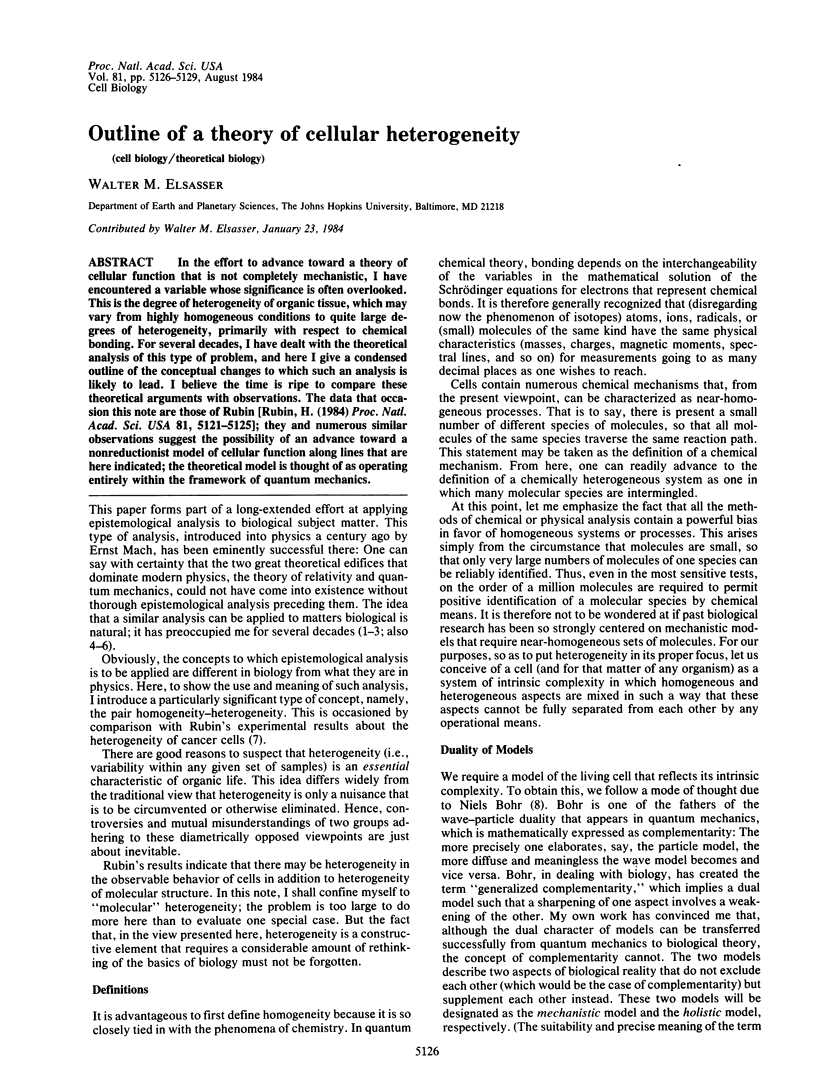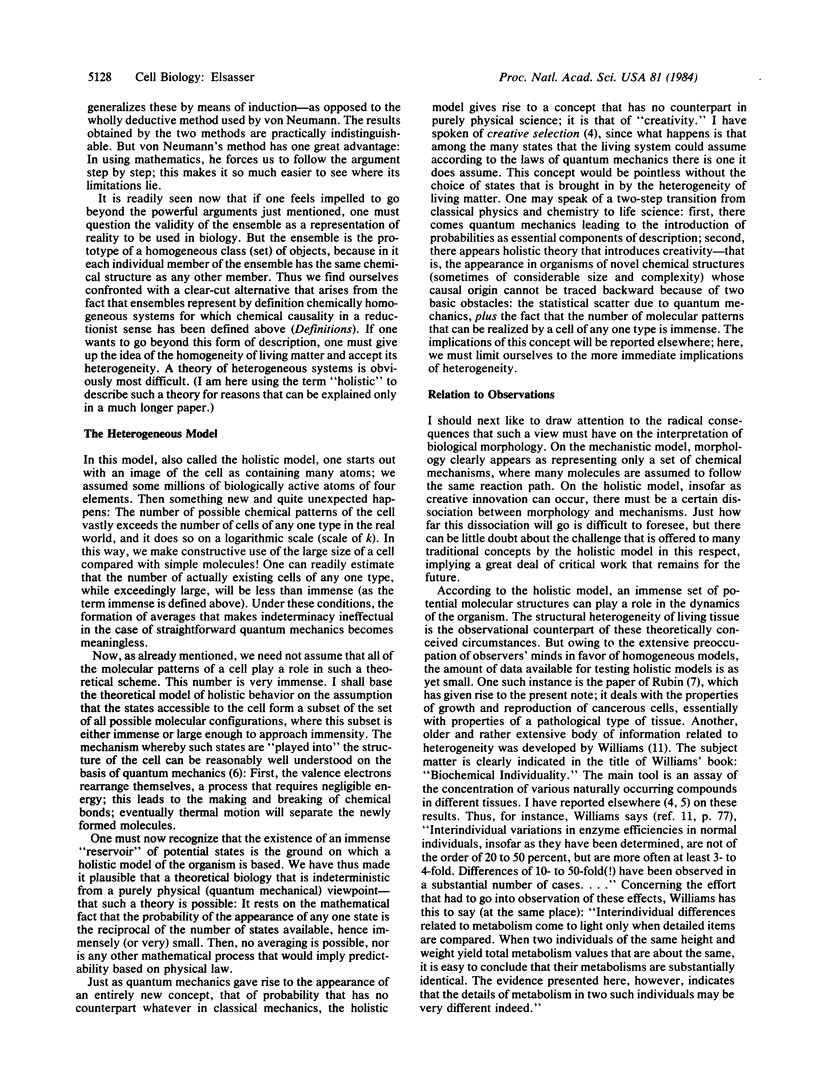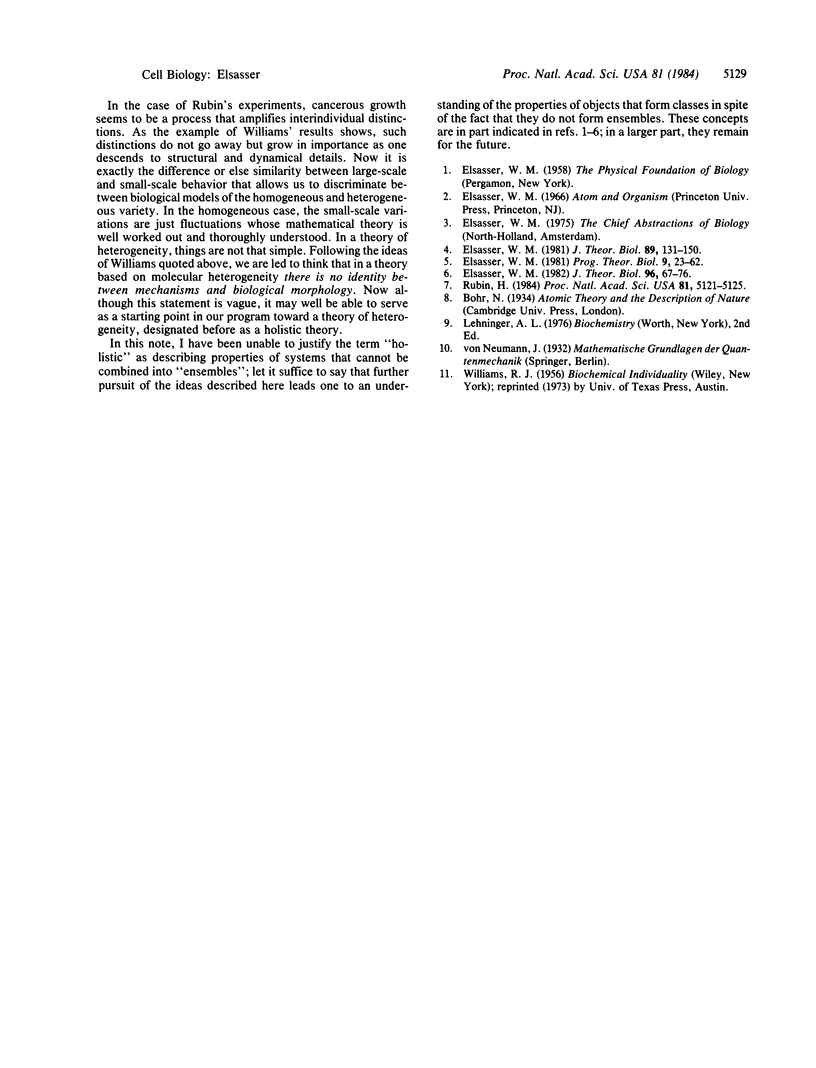Abstract
In the effort to advance toward a theory of cellular function that is not completely mechanistic, I have encountered a variable whose significance is often overlooked. This is the degree of heterogeneity of organic tissue, which may vary from highly homogeneous conditions to quite large degrees of heterogeneity, primarily with respect ot chemical bonding. For several decades, I have dealt with the theoretical analysis of this type of problem, and here I give a condensed outline of the conceptual changes to which such an analysis is likely to lead. I believe the time is ripe to compare these theoretical arguments with observations. The data that occasion this note are those of Rubin [Rubin, H. (1984) Proc. Natl. Acad. Sci. USA 81, 5121-5125]; they and numerous similar observations suggest the possibility of an advance toward a nonreductionist model of cellular function along lines that are here indicated; the theoretical model is thought of as operating entirely within the framework of quantum mechanics.
Full text
PDF



Selected References
These references are in PubMed. This may not be the complete list of references from this article.
- Elsasser W. M. Principles of a new biological theory: a summary. J Theor Biol. 1981 Mar 7;89(1):131–150. doi: 10.1016/0022-5193(81)90182-x. [DOI] [PubMed] [Google Scholar]
- Elsasser W. M. The other side of molecular biology. J Theor Biol. 1982 May 7;96(1):67–76. doi: 10.1016/0022-5193(82)90156-4. [DOI] [PubMed] [Google Scholar]
- Rubin H. Early origin and pervasiveness of cellular heterogeneity in some malignant transformations. Proc Natl Acad Sci U S A. 1984 Aug;81(16):5121–5125. doi: 10.1073/pnas.81.16.5121. [DOI] [PMC free article] [PubMed] [Google Scholar]


